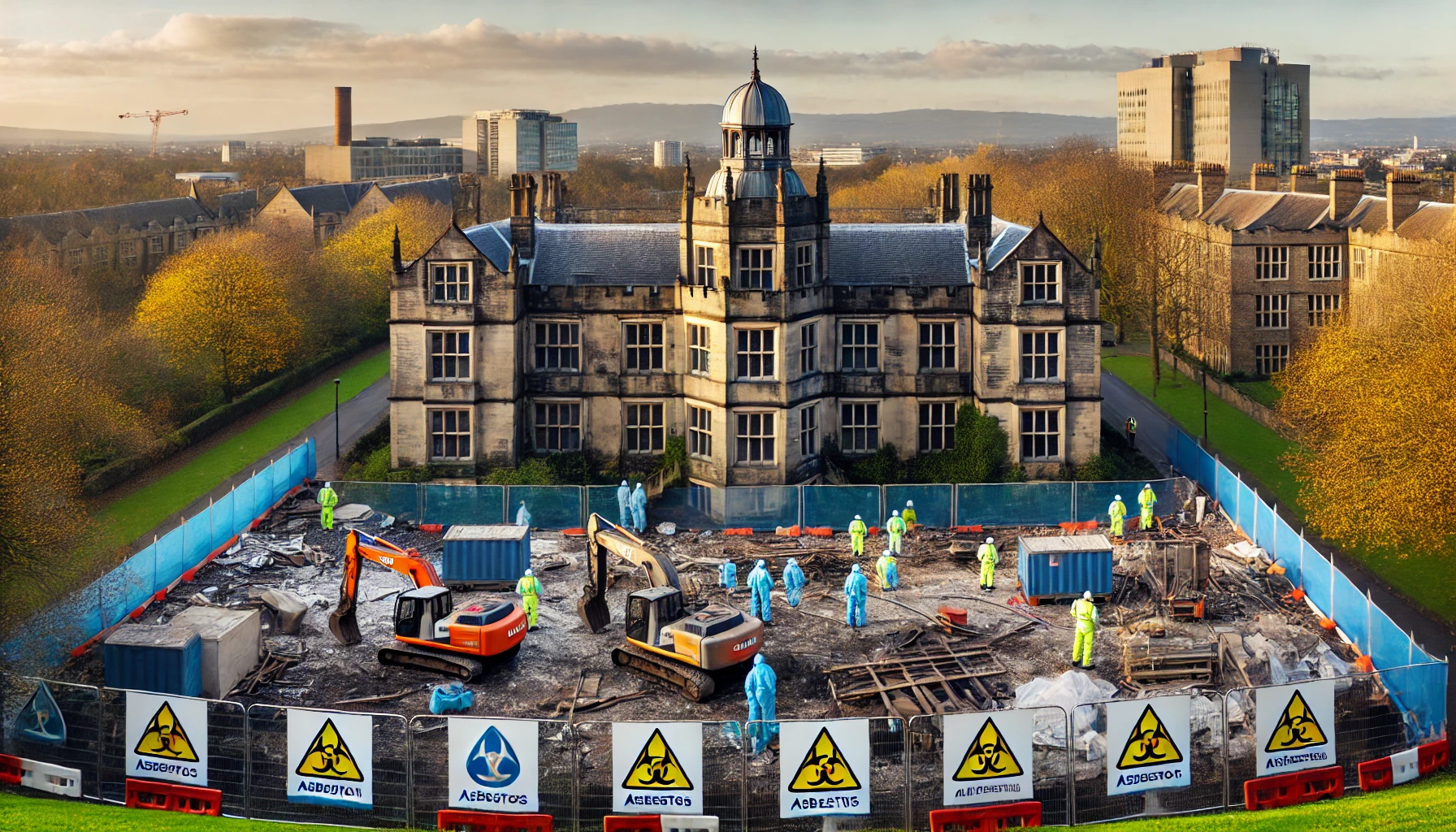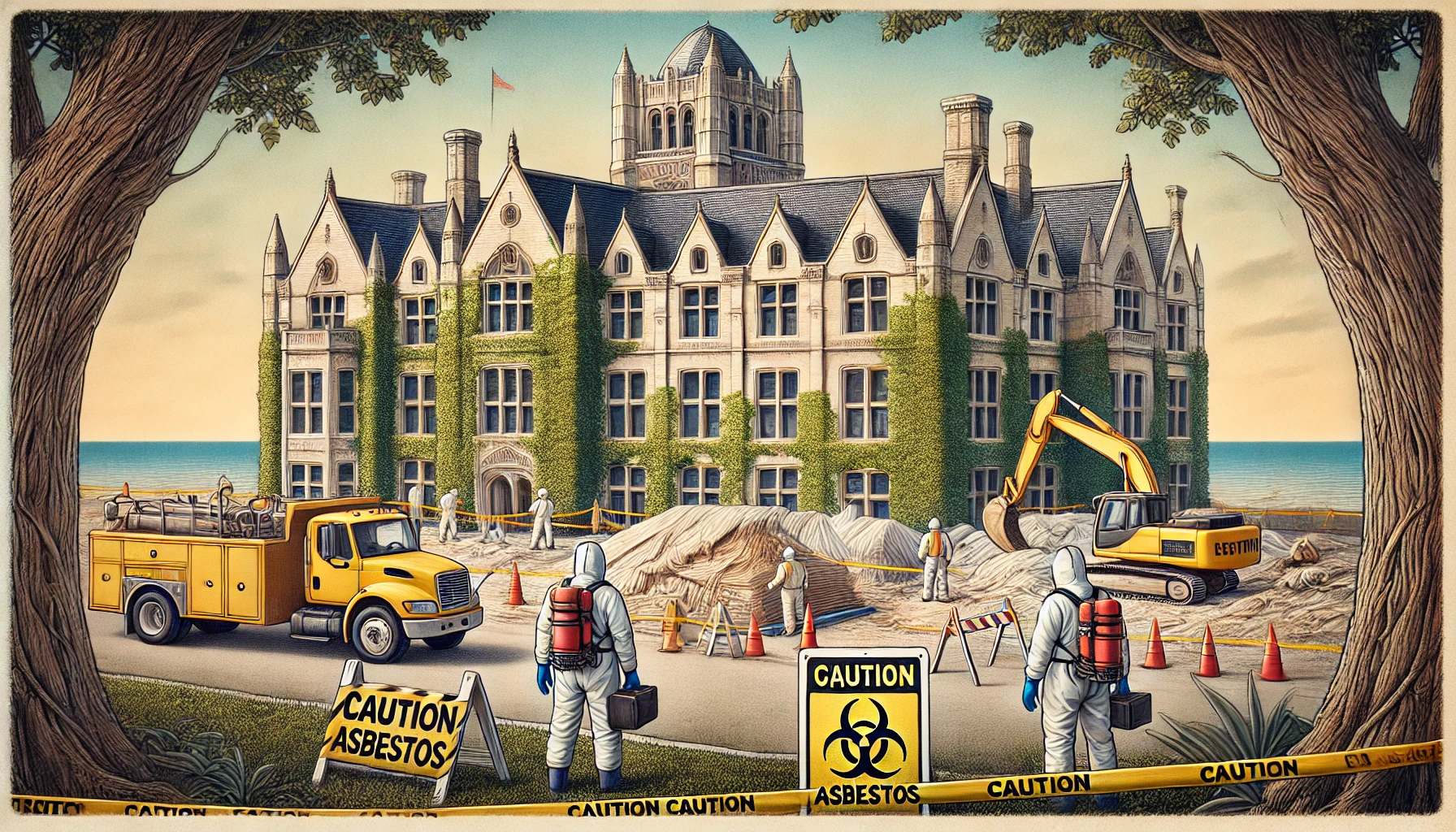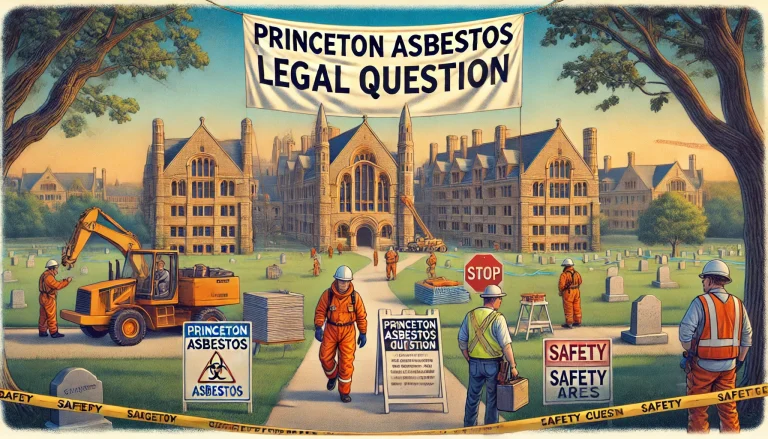Asbestos was once a widely used material in construction due to its fire-resistant and insulating properties. However, over time, it became clear that exposure to asbestos could cause severe health problems, including lung cancer, asbestosis (a chronic lung disease), and mesothelioma (a cancer most commonly linked to asbestos exposure). Today, asbestos is banned in many parts of the world, but its legacy remains in older buildings, including at educational institutions like Princeton University. This article will explore the Princeton asbestos legal question, highlighting the legal challenges and proactive measures Princeton University has taken to manage asbestos-related risks and ensure the safety of its community.
Background on Asbestos at Princeton University
Princeton University, founded in 1746, has many historic buildings that were constructed using materials containing asbestos before the health risks of this substance were fully understood. Asbestos was used in insulation, ceilings, flooring, and roofing materials, making it present in many of the campus’s older structures.
In the early 1980s, when the dangers of asbestos became clear, Princeton began addressing the problem by conducting surveys of its buildings to identify where asbestos-containing materials (ACMs) were located. The university established a management program aimed at preventing exposure to these hazardous materials. Over the years, Princeton has worked to keep the community informed and ensured that any necessary removal or containment of asbestos materials follows strict health and safety guidelines.
Understanding the Princeton Asbestos Legal Question: Challenges and Solutions
The Princeton asbestos legal question revolves around how Princeton University addresses the risks and responsibilities associated with asbestos in its historic campus buildings. Like many institutions with aging infrastructure, Princeton has faced the dual challenge of protecting the health of its community while adhering to complex legal standards for asbestos management.
Asbestos was widely used in construction during the mid-20th century, including in insulation, flooring, and roofing materials. Over time, its harmful effects on health, such as causing lung cancer and mesothelioma, became evident, leading to strict regulations on its use and removal. For Princeton, the discovery of asbestos during renovation projects has led to legal scrutiny and community concerns about safety.
To manage these challenges, Princeton has implemented a comprehensive asbestos management plan. This includes identifying buildings with asbestos-containing materials (ACMs), conducting regular inspections, and ensuring the safe removal or containment of hazardous materials. The university works closely with licensed contractors to follow federal laws like the Clean Air Act and OSHA guidelines, as well as New Jersey’s state-specific asbestos regulations.
In addition to compliance, Princeton emphasizes transparency by keeping students, staff, and faculty informed about ongoing asbestos-related projects. This open communication reassures the community that their health and safety are top priorities. While legal cases have arisen, such as contractor disputes or issues tied to renovations, Princeton has consistently taken proactive steps to address these matters and improve its procedures.
The Princeton asbestos legal question highlights the importance of balancing historic preservation, legal compliance, and modern safety standards. Princeton’s approach serves as a valuable example for other institutions facing similar challenges, showing that with careful planning and action, risks can be effectively managed.
Legal Context of Asbestos Issues
There are a number of federal and state laws that regulate asbestos handling and removal. Some of the key laws include:
- Clean Air Act: Regulates the removal and disposal of asbestos to ensure that it does not pollute the air.
- Occupational Safety and Health Administration (OSHA) Standards: OSHA guidelines set strict limits on asbestos exposure for workers and require institutions to maintain a safe working environment.
- State Regulations: States like New Jersey have specific laws and regulations about asbestos removal and building inspections that impact institutions like Princeton.
These laws ensure that Princeton, and other institutions, take appropriate steps to manage and remove asbestos from their buildings. The university must follow these guidelines to prevent any potential exposure to students, faculty, and staff, which could lead to lawsuits or health problems down the line.
Key Legal Cases Involving Princeton and Asbestos
Asbestos in Campus Buildings
In the course of renovations and repairs on older buildings, asbestos has occasionally been discovered in Princeton’s structures. When this happens, the university has taken immediate action to address the situation by sealing off affected areas and working with licensed contractors to safely remove the asbestos.
In some cases, lawsuits have arisen when community members or workers involved in these renovations were exposed to asbestos. However, Princeton has generally worked to address these cases proactively by ensuring compliance with legal requirements for removing asbestos and informing people about any potential exposure.
Contractor Lawsuit Against Princeton
One particular case involved a contractor who sued the university after following official orders to dispose of asbestos-containing materials improperly. The contractor argued that they were following Princeton’s instructions, but the lawsuit raised concerns about the university’s responsibility for overseeing how asbestos is managed during construction work.
This case serves as a reminder of the importance of clear communication and proper procedures when handling hazardous materials. Institutions like Princeton must ensure that all contractors are well-versed in asbestos safety practices and that their work is continuously monitored.
Alimta Patent Lawsuit
Although not directly related to the physical presence of asbestos on campus, Princeton University has also been involved in a legal case that connects the university’s research to the dangers of asbestos. Princeton was linked to the development of Alimta, a drug used to treat mesothelioma. The lawsuit involved patent rights related to the drug, which was developed in part from research funded by Princeton’s Chemistry Department.
This case demonstrates how Princeton’s engagement with asbestos-related issues extends beyond managing physical asbestos on campus. The university’s involvement in cancer research underscores its role in addressing the health impacts of asbestos exposure, particularly with regard to diseases like mesothelioma.
Princeton’s Proactive Measures
To protect its community from the dangers of asbestos, Princeton University has implemented a range of proactive measures to ensure the safety of everyone on campus.
Asbestos Management Program
Princeton has a comprehensive asbestos management program in place. This program involves regular inspections of all campus buildings, especially older ones where asbestos may still be present. Buildings are tested for asbestos, and if materials are found, they are either removed or contained to prevent exposure. This proactive approach helps prevent situations where asbestos could be disturbed and pose a risk.
Air Quality Monitoring
The university also conducts regular air quality testing to ensure that any asbestos fibers that might be airborne are not present at harmful levels. If asbestos is found in the air, steps are taken immediately to contain the area and remove the hazardous material.
Staff and Contractor Training
As part of its commitment to safety, Princeton provides ongoing training for staff and contractors who may come into contact with asbestos-containing materials. This training ensures that everyone involved in maintenance, construction, and renovation projects understands how to handle asbestos safely. The goal is to avoid any unintentional exposure, even in the course of daily work.
Communication with the Campus Community
Princeton takes great care in communicating with its community members. If asbestos-related work is being done in or near areas where students or staff are located, the university provides clear warnings and updates. This transparency helps reassure people that their safety is a priority.
Broader Implications for Institutions
Princeton’s experience with asbestos is not unique. Many other older universities and institutions face similar challenges with managing asbestos. The lessons learned from Princeton’s approach to dealing with asbestos can serve as a model for other schools and organizations facing the same issues.
The key takeaway is that managing asbestos requires more than just compliance with regulations—it requires a commitment to safety, communication, and proactive action. By identifying asbestos risks early, training staff to handle hazardous materials safely, and maintaining transparency with the community, universities can avoid legal issues and, most importantly, protect their students, faculty, and staff from health risks.
Conclusion
Princeton University’s handling of asbestos-related issues, often referred to as the Princeton asbestos legal question, provides valuable insights for other institutions. Through careful management, clear communication, and adherence to legal standards, Princeton has worked hard to ensure that its community remains safe from the dangers of asbestos exposure.
While the university’s proactive approach has not been without legal challenges, its commitment to addressing these issues head-on serves as an example of how other schools and organizations can manage similar concerns. The legacy of asbestos may still be present in older buildings, but with the right steps, institutions like Princeton can mitigate the risks and protect the health of everyone on campus.
FAQs
What is Princeton University’s approach to asbestos management?
Princeton uses an asbestos management plan, including regular inspections, air quality monitoring, and licensed removal to ensure safety.
Has Princeton faced lawsuits related to asbestos?
Yes, Princeton has faced cases like contractor disputes and issues during renovations, but it emphasizes compliance and safety measures.
How does Princeton ensure safety during asbestos removal?
The university hires licensed contractors, seals off affected areas, and uses strict safety protocols to prevent exposure.
Are students and staff informed about asbestos risks on campus?
Princeton prioritizes transparency by providing updates and warnings during renovations or asbestos-related work.
What role does Princeton play in asbestos-related medical research?
Princeton has contributed to research on mesothelioma treatments, including its involvement in the Alimta patent case.
Article Recommendations
Wendys Lawsuit Michigan: What the Case Reveals About Corporate Accountability in the Food Industry
Third Culture Bakery Lawsuit: How Public Opinion Influences Intellectual Property Decisions
Abilene Asbestos Legal Question: How to Identify, Handle, and Seek Justice for Asbestos Exposure




